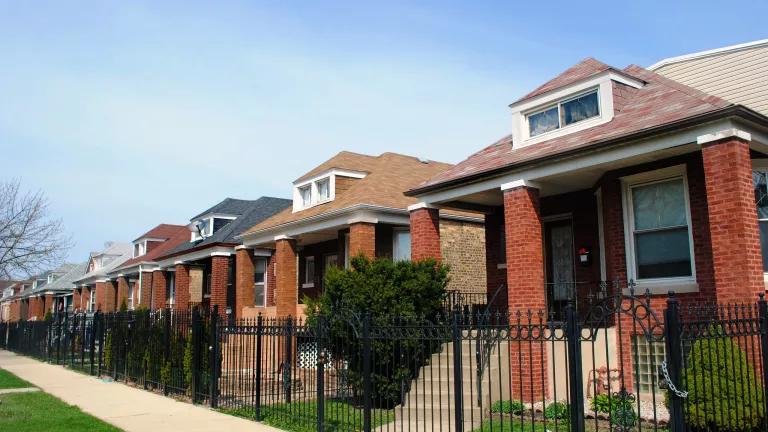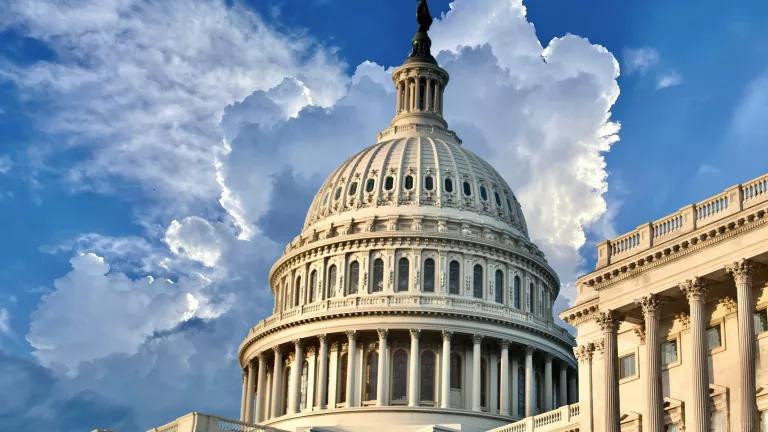NYC’s Landmark Building Energy Plan About to Get Even Better

New York City’s landmark Greener, Greater Buildings Plan (GGBP or the “Plan”) is about to get a whole lot better, thanks to a unanimous vote yesterday by the New York City Council to expand the Plan’s reach to even more of New York’s real estate, extending many of the components of the Plan to the city's mid-sized buildings and thus nearly 60 percent of the city's built area.
The original package of GGBP legislation was the most comprehensive effort in the country to reduce energy waste from existing buildings when it was signed into law in 2009. Those kinds of reductions are critical to fighting climate change, since most of the city’s current buildings will be with us for decades to come. The Plan addressed the city’s large buildings that together are responsible for 45 percent of our energy use and comprise nearly half of our square footage—private-sector buildings above 50,000 square feet. The bills approved by the Council would lower that threshold in most instances to 25,000 square feet. (The GGBP requirements also apply to public sector buildings of at least 10,000 square feet.)
In doing this, the Plan has not only saved owners and tenants money on energy and improved our public health, but the full implementation of the initial laws is expected to reduce our city’s greenhouse gas emissions by 5 percent and create thousands of local jobs in energy services and construction. Yesterday's changes to the Plan will multiply those original estimated benefits. The benefits have moved beyond New York, too, by the way, as the GGBP has galvanized other cities to create similar programs. (NRDC, along with our partner, the Institute for Market Transformation, has been taking energy efficiency policies and programs inspired by New York and other cities' leadership to various places around the country through the City Energy Project.)
The cornerstone of the GGBP, and of any effort to increase building energy efficiency, is the annual benchmarking and disclosure of energy use. Grounded in the idea that you can’t manage what you don’t measure, Int. No. 1163-A expands the Plan to require that, every year, owners and managers of buildings greater than 25,000 square feet track those buildings’ total energy and water use, using a free online tool from the U.S. Environmental Protection Agency (EPA) called Portfolio Manager, and use that tool to submit the data to the City. That information is made available to building owners and the public, currently through easy-to-use websites set up by the City and the Urban Green Council. On those websites, the simple inputting of a building address reveals that building’s benchmarking results and allows anyone to see a building’s energy performance, in addition to how it compares to other, similar structures. (The New York City Energy Efficiency Corporation’s efficienSEE tool goes a step further for multifamily buildings, using the city’s benchmarking data combined with proprietary algorithms to also predict the energy and cost savings that can result from implementing certain basic energy saving measures.)
While it might seem that simply tallying these numbers shouldn’t make much of a difference in a building’s energy consumption overall, research bears out just how significant such efforts can be. One EPA study found that buildings that were consistently benchmarked over three years averaged year-over-year energy savings of 2.4 percent. And here in New York, large buildings that were consistently benchmarked between 2010 and 2013 lowered their energy consumption by a total of 6 percent and their greenhouse gas emissions by 8 percent. These benefits are particularly important for the city’s affordable multifamily housing stock, since improving energy efficiency in these buildings yields energy cost savings that can otherwise be invested in building maintenance and can reduce tenants’ energy costs, all while helping to create healthier and more comfortable living environments.
Now, with yesterday’s expansion of the GGBP, which Mayor Bill de Blasio is expected to sign into law soon, building owners and managers of mid-sized buildings will be better positioned to manage their energy and water use, target their efficiency investments, and verify savings. Benchmarking also provides our utilities with valuable information that can help them more effectively prioritize efficiency programs and identify customers that can best benefit from these initiatives.
And our utilities play a key role in the benchmarking process. That process should get even easier in New York City soon, thanks to Con Edison and National Grid proposals recently submitted to the Public Service Commission for approval. In those documents, the utilities commit to developing systems to automatically upload whole building aggregated energy use data to Portfolio Manager. This will simplify the current process further and reduce costs for building owners by eliminating the need to obtain and manually input energy use data. The requirement that mid-sized buildings benchmark and disclose their energy use is in fact actually tied to these systems being put into place.
Also included in the suite of bills that passed yesterday was Int. No. 1160, which extends to mid-sized buildings the requirement that sub-meters are installed for individual commercial tenant spaces by 2025. (The bill also reduces the threshold for installing sub-meters for tenant spaces from spaces greater than 10,000 square feet in the original Plan to those greater than 5,000 square feet in the extension.) Many of these buildings are currently master-metered. That is, all the electricity the building uses is reported on one meter; individual tenants have no idea how much energy they’re using and have little incentive to cut their energy use because they’re billed at a standard rate not directly tied to their actual energy use.
Something as simple as sub-metering can have impressive results: In one study of more than 3,000 Massachusetts apartment buildings, buildings where owners paid the utility bills used about 30 percent more energy per square foot than buildings where tenants paid their own energy bills.
The last amendment to the Plan, established through Int. No. 1165, extends to non-residential mid-sized buildings the requirement that buildings upgrade their lighting to meet current energy code requirements by 2025 and also expands the requirement to common areas of multifamily buildings. Lighting currently accounts for a full 13 percent of the energy used in large New York City buildings. But there’s a lot of waste that can be cut and money saved because many large buildings use outdated and inefficient fixtures and bulbs. And few of these buildings take advantage of lighting controls that can turn lights off when they’re not needed. The benefits to building owners can be huge: Lighting upgrades are serious money savers that pay for themselves in three years or often less, meaning extra savings in later years are pure gravy.
New York City has a nation-leading and absolutely necessary climate goal: to reduce greenhouse gas emissions by at least 80 percent by 2050, the amount scientists say we must cut if we want to avoid climate change’s worst impacts. Reaching that goal will require many steps, and among them, yesterday’s passage of legislation to expand the GGBP is an important one that continues to demonstrate why New York City is a model for how cities can reduce energy waste. It’s a step that will benefit building owners and tenants, as well as all New Yorkers, saving us money as it reduces carbon emissions, helps improve the resilience of our electric system, and gives us all cleaner air to breathe.




